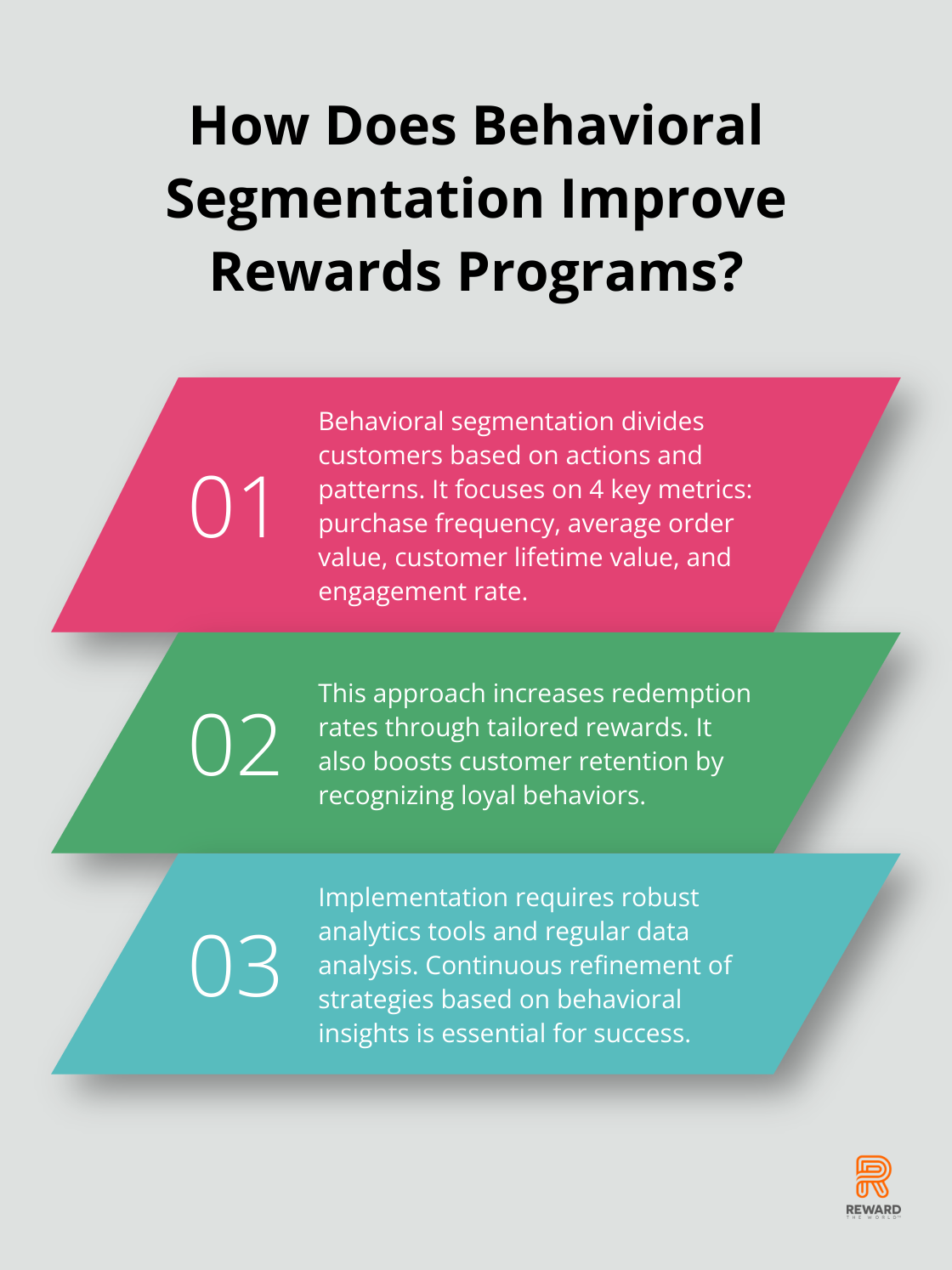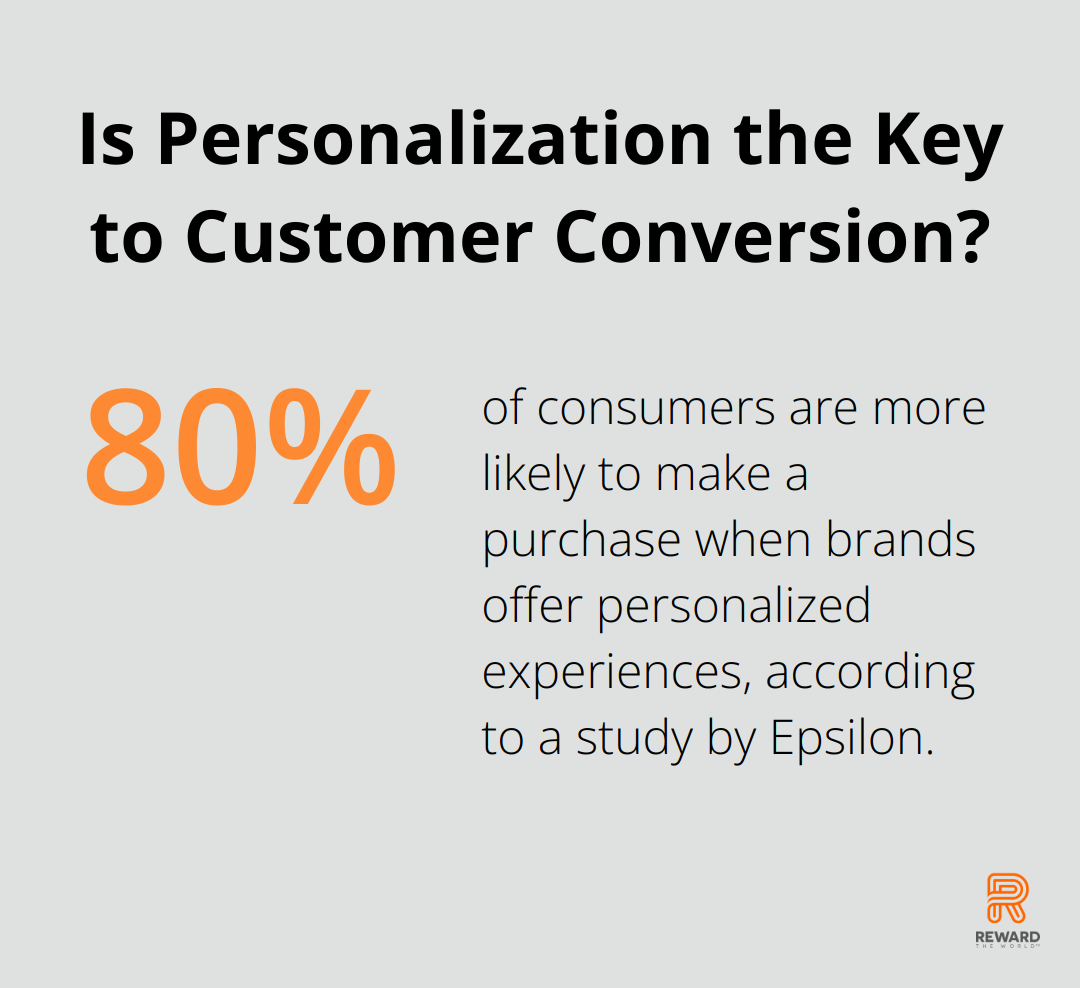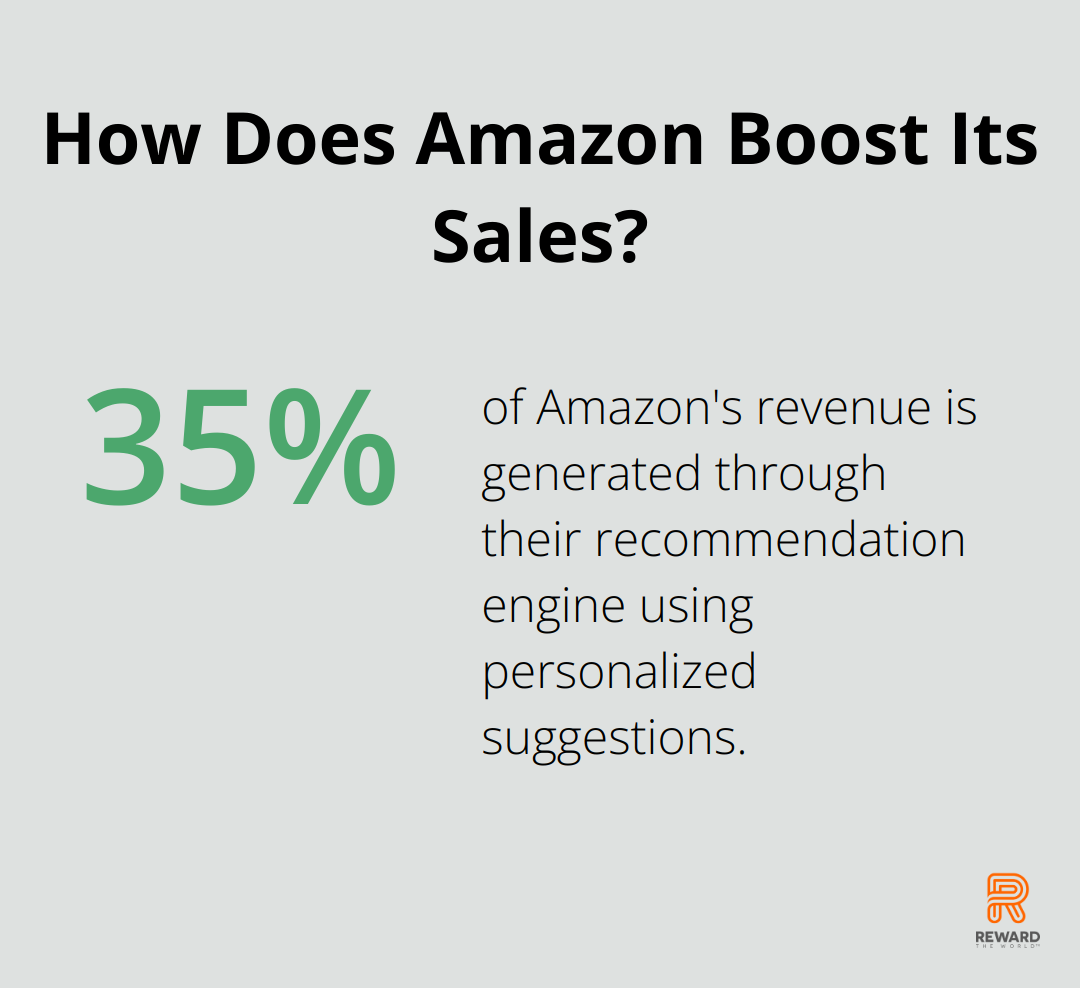
Behavioral segmentation is a game-changer for reward programs. It allows businesses to tailor their offerings based on customer actions and preferences.
At Reward the World, we’ve seen firsthand how this approach can dramatically boost engagement and loyalty. In this post, we’ll show you how to master behavioral segmentation for your rewards program, driving better results and happier customers.
What Is Behavioral Segmentation?
The Foundation of Customer-Centric Rewards
Behavioral segmentation divides customers into groups based on their actions, decisions, and patterns. It forms the backbone of understanding how people interact with your brand, allowing you to tailor your rewards program for maximum impact.
Harnessing the Power of Customer Actions
In rewards programs, behavioral segmentation transforms basic demographic data into actionable insights. This approach underscores the importance of behavioral data in crafting effective reward strategies.
Essential Metrics for Success
To implement behavioral segmentation effectively, focus on these key metrics:
- Purchase frequency (How often customers buy)
- Average order value (Typical spend per transaction)
- Customer lifetime value (Total worth of a customer over time)
- Engagement rate (Frequency of customer interactions with your brand)

These metrics provide a comprehensive view of customer behavior, enabling the creation of targeted and effective reward strategies.
Revolutionizing Rewards Programs
Behavioral segmentation offers substantial benefits for rewards programs. Leveraging behavioral data allows you to:
- Increase redemption rates through tailored rewards
- Boost customer retention by recognizing loyal behaviors
- Enhance customer experience with personalized offers
Practical Implementation Strategies
To kickstart your behavioral segmentation efforts:
- Invest in robust analytics tools to track customer actions
- Analyze data regularly to identify patterns and trends
- Test different reward strategies based on behavioral insights
- Refine your approach continuously based on results
Behavioral segmentation requires constant adaptation to stay ahead of changing customer behaviors and preferences. As we move forward, let’s explore how to implement these strategies effectively in your reward programs.
How to Implement Behavioral Segmentation in Rewards
Identify Key Customer Behaviors
Start by pinpointing the behaviors that matter most to your business. These might include:
- Purchase frequency
- Average order value
- Product category preferences
- Time between purchases
- Engagement with marketing communications

Focus on behaviors that directly impact your bottom line or indicate strong customer loyalty. For example, a coffee shop might track how often customers visit and what types of drinks they order.
Collect and Analyze Behavioral Data
After you’ve identified key behaviors, it’s time to gather data. Use your point-of-sale system, website analytics, and customer relationship management (CRM) software to collect this information.
Analyze this data to uncover patterns. Look for:
- Seasonal buying trends
- Products frequently purchased together
- Times of day or week when purchases are most common
- Channels customers prefer for purchases or communication
Tools like Google Analytics can help you track online behaviors, while integrated POS systems can provide insights into in-store purchases.
Create Targeted Reward Segments
With your data analyzed, segment your customers based on their behaviors. Some effective segments might include:
- High-value customers (top 20% in terms of purchase frequency or total spend)
- At-risk customers (those whose engagement has decreased recently)
- Category enthusiasts (customers who frequently purchase from a specific product category)
- Seasonal shoppers (those who make purchases mainly during certain times of the year)
For each segment, develop tailored rewards that speak to their specific behaviors and preferences. For instance, category enthusiasts might receive early access to new products in their favorite category, while high-value customers could get exclusive perks or higher-tier rewards.
Personalize Reward Offerings
Use your behavioral segments to create personalized reward offerings. A study by Epsilon found that 80% of consumers are more likely to make a purchase when brands offer personalized experiences.
For example, if you identify a segment of customers who frequently purchase eco-friendly products, you could offer them rewards from sustainable brands or donations to environmental causes in their name.
Test and Refine Your Approach
Implementing behavioral segmentation requires an ongoing process. Continuously test different reward strategies and measure their impact. Key metrics to track include:
- Redemption rates for different types of rewards
- Changes in purchase behavior after receiving rewards
- Customer feedback on the relevance of rewards
Adjust your segmentation and reward strategies based on these insights. Customer behaviors can change over time, so regularly review and update your segments.
The implementation of behavioral segmentation in rewards programs offers a powerful way to enhance customer engagement and loyalty. As we move forward, we’ll explore specific strategies to make your behavioral segmentation efforts even more effective.
How to Supercharge Your Rewards Program
Tailor Rewards to Purchase History
A customer’s past purchases provide invaluable insights. Use this data to create compelling offers. If a customer often buys running shoes, offer them early access to the latest athletic footwear or exclusive discounts on performance gear.
80% of consumers are more likely to make a purchase from a brand that provides personalized experiences. This approach not only increases sales but also demonstrates your understanding of customer needs.
Reward Active Engagement
Look beyond purchases. Recognize and incentivize all forms of engagement. This includes social media interactions, product reviews, or participation in brand events. Award bonus points for customers who share their purchases on Instagram or write detailed product reviews.
Starbucks’ Rewards program exemplifies this strategy, offering “stars” for mobile orders and in-app games. For every $1 spent using the Starbucks app or a registered Starbucks Card, customers earn 2 Stars. This approach maintains customer engagement between purchases, fostering a stronger brand connection.
Create Dynamic Loyalty Tiers
Implement a system that adapts to a customer’s lifetime value. As customers advance, offer increasingly valuable perks (ranging from priority customer service to exclusive products or experiences).

A luxury hotel chain might offer room upgrades to silver members, while platinum members receive access to a personal concierge. This tiered approach provides customers with a clear incentive to increase their engagement and spend.
Use Predictive Analytics
Employ AI and machine learning to anticipate customer needs. Analyze past behavior to predict future actions and offer rewards proactively. If data indicates a customer is likely to churn, send a personalized offer to re-engage them before they leave.
Amazon’s recommendation engine exemplifies this strategy in action, generating 35% of their revenue through personalized suggestions.
Time Your Rewards Perfectly
Timing plays a crucial role. Use behavioral data to identify when customers are most likely to engage and send offers accordingly. If a customer typically shops on weekends, schedule your best deals for Friday afternoon.
Sephora’s Beauty Insider program excels at this, sending birthday month offers that drive significant engagement and sales.
Final Thoughts
Behavioral segmentation has transformed reward programs, enabling businesses to create targeted incentives that boost engagement and loyalty. Companies must collect comprehensive data, analyze it effectively, and create dynamic segments that adapt to customer behavior. Regular testing and refinement of strategies will help businesses stay ahead of changing consumer preferences and market trends.

The future of behavioral segmentation in rewards programs looks promising, with advanced AI and machine learning algorithms enabling real-time personalization. We expect to see increased integration of behavioral data across multiple touchpoints, creating seamless experiences for customers both online and offline. Businesses that master behavioral segmentation will gain a significant competitive advantage in fostering stronger customer relationships.
Reward the World offers tools and insights to create dynamic, personalized reward strategies that resonate with customers. Our platform helps businesses harness the power of behavioral segmentation in their rewards programs (driving business growth and customer loyalty). We believe behavioral segmentation will play an increasingly vital role in shaping the future of customer engagement.
